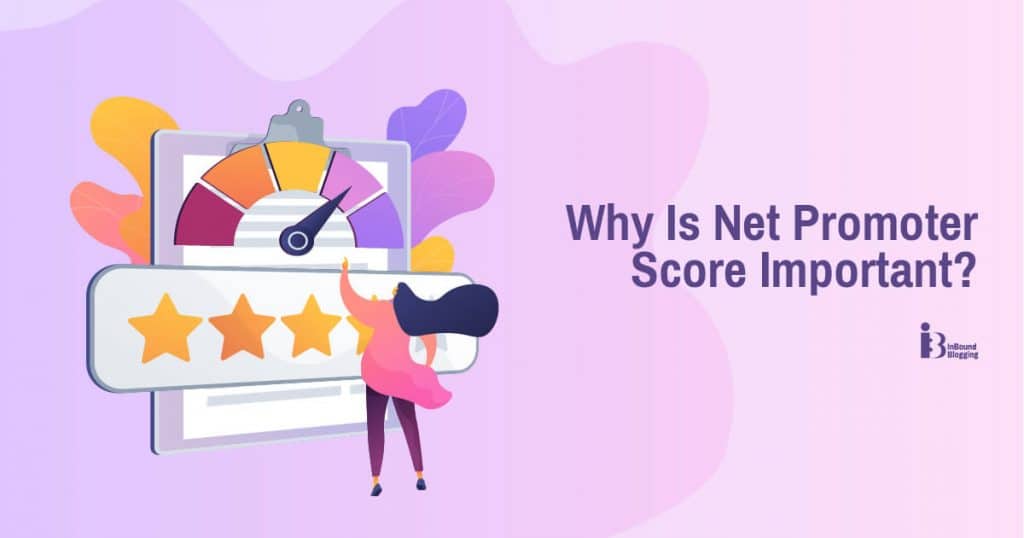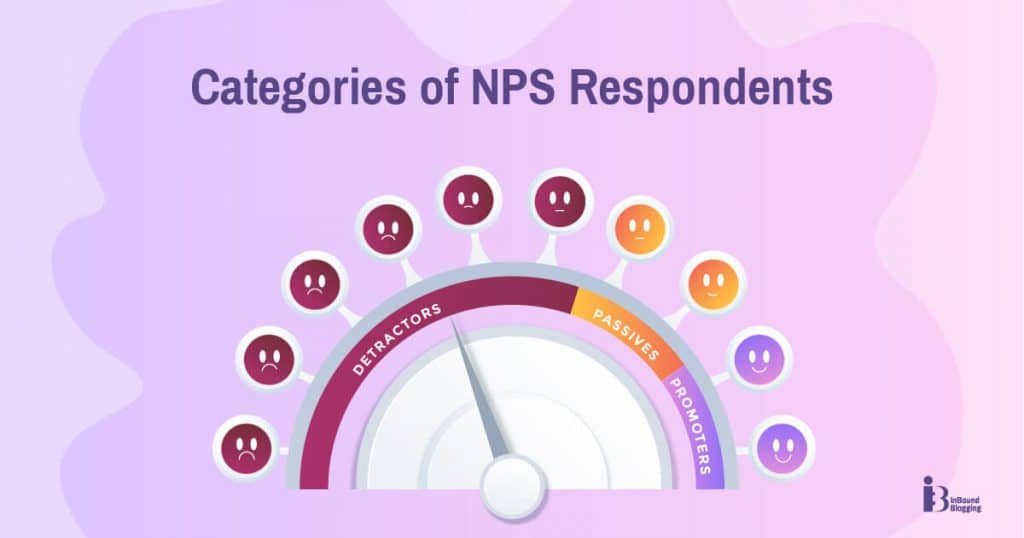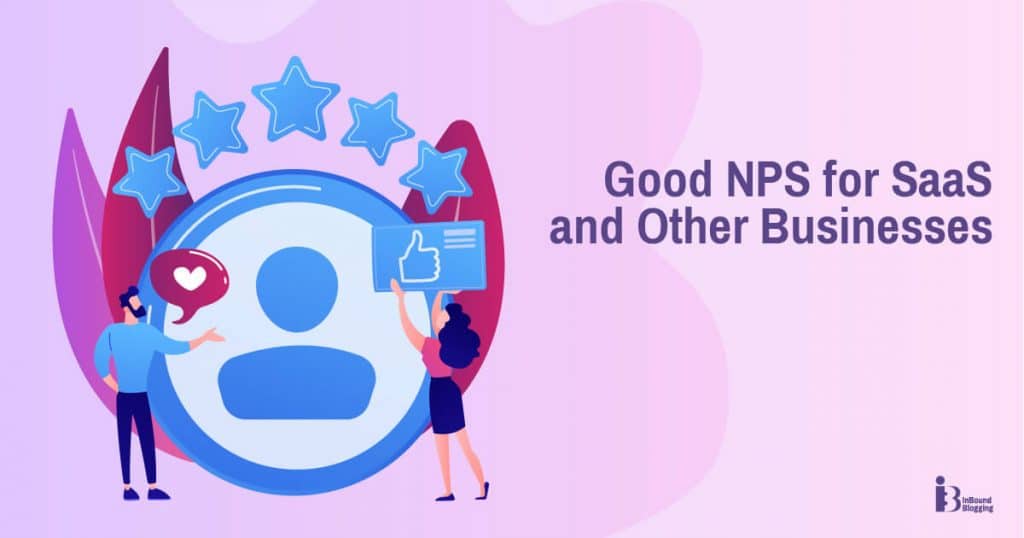The competitive Software as a Service (SaaS) landscape requires an in-depth understanding and effective measurement of customer satisfaction. NPS (Net Promoter Score) is an effective tool for gauging this critical factor.
This article discusses what NPS is and the crucial role it plays in evaluating customer happiness and loyalty. Moreover, we will explore how SaaS companies can leverage this metric to enhance their performance.
If you want to learn how to use strategic planning for customer retention and business expansion in line with NPS SaaS benchmarks, keep reading. Insightful know-how awaits you below.
Net Promoter Score for SaaS [Key Takeaways]
- NPS is a pivotal measure of customer satisfaction and loyalty in the SaaS industry.
- It categorizes respondents as promoters, passives, and detractors.
- Effective NPS implementation can drive business growth.
- Understanding and implementing NPS can help identify areas for improvement and customer pain points.
- Regularly monitoring NPS can lead to better customer success and engagement strategies.
What Does NPS Indicate?
The Net Promoter Score (NPS) is instrumental in assessing customer loyalty and satisfaction—both critical metrics for business success. It helps businesses identify potential issues early on that could lead to customer churn later.
From a growth perspective, NPS serves as an excellent predictor of potential expansion opportunities. A particularly high score means you have a strong customer base. These clients will stick around for longer and also contribute to a firm’s growth by advocating its services. Brand advocacy enhances the company’s reputation and brings new users through influential word-of-mouth marketing strategies, creating an effective recruitment channel at lower acquisition costs.
Why Is Net Promoter Score Important?

The Net Promoter Score (NPS) metric offers key insights critical for SaaS businesses. The impact of not measuring or failing to increase NPS can hinder business growth and potential success. Its significance is multifold:
- Customer retention: High NPS ensures better customer retention by identifying issues leading to churn. This is vitally important for SaaS companies operating on subscription-based models, where retaining long-term customers significantly impacts profits.
- Business growth: NPS is directly proportional to a firm’s growth potential. Happy customers promote your brand and bring in referrals while remaining loyal, catalyzing the expansion at lower acquisition costs.
- Customer advocacy: The most loyal customers function as brand evangelists who elevate your brand’s reputation through positive word-of-mouth marketing.
| NPS Significance | How It Helps |
| Customer retention | Identifies issues causing customer churn. |
| Business growth | Happy customers lead to higher growth prospects. |
| Customer advocacy | The happiest clients help build a positive brand reputation. |
Ultimately, the importance of NPS lies in its ability to offer actionable insights into improving customer experiences, fostering loyalty, and driving steady business growth.
Categories of NPS Respondents

In the net promoter score (NPS) evaluation, respondents are typically classified into three categories based on their likelihood to recommend a business: promoters, passives, and detractors.
- Promoters (score 9–10) are your brand’s biggest fans. They’re enthusiastic customers who will continue purchasing from your SaaS company and likely refer others, contributing to your business growth.
- Passive (score 7–8) individuals are satisfied but not enthusiastic customers. They are in danger of being swayed by the competition. These customers often provide the most straightforward opportunities for improvement.
- Detractors (score 0–6) are unhappy customers who can damage your brand image with negative word-of-mouth offerings.
Understanding where most of your respondents fall can give you insights into several key areas:
- How well you’re acquiring and retaining loyal customers
- Identifying potential issues that may lead to churn
- Opportunities for feedback and improvement
| Respondent Category | Scores | Description |
| Promoter | 9–10 | Loyal enthusiasts who will promote your brand |
| Passive | 7–8 | Satisfied but indifferent; easily swayed by competitors |
| Detractor | 0–6 | Unhappy consumers; could potentially harm the reputation |
Parsing NPS survey data efficiently involves understanding these respondent categorizations correctly and taking actions based on their implications, ultimately leading to improved customer experiences and stronger loyalty among users in the SaaS sphere. By going beyond just calculating the scores, analyzing the survey data helps uncover specific areas for improvement and reveals trends that can guide future business strategies.
How to Calculate Net Promoter Score?
The Net Promoter Score (NPS) is calculated using a simple formula. Here’s how it works:
Step 1: Classify respondents into three categories based on their responses to the question, “On a scale of 0–10, how likely are you to recommend our product/service?”
- Promoters: scores of 9 or 10
- Passives: scores of 7 or 8
- Detractors: scores between 0 and 6
Step 2: For each group, calculate the percentage of total responses.
Step 3: Subtract the percentage of detractors from the percentage of promoters. Passives aren’t factored into the calculation.
The NPS formula looks like this: NPS = % Promoters – % Detractors
For instance, let’s say you surveyed a hundred customers and got:
- 70 promoters
- 20 passives
- 10 detractors
First, calculate the percentages:
- % Promoters = (70/100)*100 = 70%
- % Detractors = (10/100)*100 = 10%
Plug these values into your NPS formula: NPS = % Promoters – % Detractors = 70 – 10 = +60 This “60” is your NPS—it ranges from -100 to +100. Use NPS as an indicator of customer loyalty and satisfaction; the closer to +100 it is, the better for your SaaS firm.
Good NPS for SaaS and Other Businesses

The concept of a “good” net promoter score (NPS) varies across different industries and businesses. What might be considered impressive in one industry could be below average in another. Industry benchmarks provide substantial insights into setting realistic targets, depending on the nature of the business.
Consider how these factors shape NPS standards for different industries:
- Customer expectation: The level of service customers expect can heavily influence NPS results. For instance, hospitality and digital services companies often have higher scores as they are directly linked to customer experience.
- Competition intensity: Industries with fierce competition usually have lower NPS because customers have many easily approachable alternatives.
- Business configuration: Many companies selling directly to consumers often achieve higher scores than those operating through middlemen or dealerships. A direct relationship enables better resolution of issues and increased customer satisfaction, which is typically reflected in the NPS score.
Here’s an example illustrating typical high, low, and average NPS scores across various businesses:
| Industry/Business | Low | Average | High |
| Banks and Financial Services | -35 | -16 | -1 |
| SaaS Companies | -5 | 14 | 23 |
| Retail | 12 | 39 | 62 |
In this table, you’ll see that certain sectors, such as banking, may carry negative averages due to inherent complexities and less personalized consumer experiences. In contrast, SaaS companies, given their direct client relationships and round-the-clock service provision ability, exhibit a healthier range of NPS.
Regardless of industry type, a low NPS is anything below 0. However, continually striving for improvement remains crucial to achieving sustained growth, customer loyalty, and brand advocacy—the core pillars transforming net promoter scores into commendable milestones.
“As a SaaS startup, we take all of our customer satisfaction metrics seriously, and we particularly focus on optimizing and improving our net promoter score (NPS) metrics. We measure and optimize our NPS metric by actively collecting customer feedback through in-app and email surveys, feedback forms, and tracking reviews and engagement on 3rd party websites. Our overall goal is to stay above 50 at all times, and making active software updates, improvements, and changes based on feedback helped us boost customer retention, satisfaction, and business growth across the years.” John Xie, Co-Founder & CEO, Taskade
NPS Benchmarks for SaaS Companies
As a SaaS business, it’s important to compare your company’s NPS score to the SaaS NPS benchmarks. Knowing the average NPS score for SaaS companies is essential for understanding where you stand.
However, there isn’t a universal NPS SaaS benchmark. It depends on various factors, such as product type, target audience, and company size.
For instance, in the SaaS industry, an NPS above 30 is usually considered a good score, while anything above 70 denotes “world-class” customer loyalty. On average:
- An enterprise SaaS company might observe an NPS ranging from around 30 to 35.
- A mid-market SaaS business may score between 40 and 50.
- Small businesses or start-ups are likely to experience a varied range owing to unpredictable customer sentiment in the initial phases of growth.
Apart from this standard benchmarking, it’s advisable for SaaS companies to also consider competitor scores and industry-specific nuances when interpreting their NPS results. Ultimately, consistent positive upward movement in your own numbers over time should be the goal rather than hitting any specific numeric target.
Remember that high-performing SaaS companies with strong loyalty scores do not merely measure their NPS; they constantly strive to enhance their products and services based on the insights gained.
“We value our customers’ opinions and take their feedback seriously. Apart from measuring their NPS score, we also request qualitative feedback, which has proven invaluable to our product’s growth. Recently, we received feedback from a long-time promoter who had become passive due to our product’s lack of user segmentation. We recognized the need for focused targeting and conducted surveys to gather data from our other customers. Following that, we launched a new feature, user segmentation, within a few months. This seamless integration has been well-received by our customers and has helped us actively improve our product.
Not only has this particular feature helped us retain that customer, but we also realized that analyzing NPS data can help us identify various strategies to keep our customers satisfied, get more product advocates, and prevent churn.” Sonika Mehta, Product Director and Co-Founder, Zonka Feedback
When Should You Run an NPS Survey?

Conducting NPS surveys at the right time is crucial to gathering valuable insights and improving customer experiences. The timing and frequency of NPS surveys differ based on various factors, including the nature of your business and customer lifecycle.
Let’s explore these considerations for a SaaS company:
- After key touchpoints: After specific interactions, such as onboarding completion or customer support interaction, it’s important to gauge how well you served the customers’ needs.
- Post-purchase surveys: Post-purchase surveys can offer insight into initial user impressions about the product, helping them feel valued and heard.
- Periodic surveys: Regular surveys help track changes in user satisfaction over time. Bi-annual intervals often work well, though this might vary based on your software’s complexity or nature. When it comes to following B2B SaaS NPS benchmarks, it’s recommended to survey your customers quarterly.
- After product updates or changes: If you introduce significant changes to your product/service, an NPS survey can help gauge users’ reactions toward these modifications.
| Event | Survey Timing |
| Key touchpoints | Immediately after major interactions |
| Post-purchase | Shortly after purchase (often within 7 days) |
| Periodic surveys | Quarterly or bi-annually |
| Product updates/changes | Immediately following releases |
Remember, while frequent feedback collection is crucial for maintaining high service standards, avoid excessive surveys that may lead to survey fatigue among users. Striking this balance is key to the successful use of NPS in SaaS businesses.
How to Run a SaaS NPS Survey and Collect Data
Running an influential NPS survey and collecting relevant data is fundamental to garnering valuable insights about your customers. Here’s a step-by-step guide for SaaS companies to create and execute one:
1. Define your goals: Before you run an NPS survey, start by setting clear objectives. Are you looking to improve customer retention, examine product usage feedback, or measure the overall satisfaction level?
2. Craft your questions: While the common NPS question “On a scale of 0–10, how likely are you to recommend our product/service?” remains constant, adding follow-up questions like “What can we do better?” can reveal critical insights.
3. Choose an appropriate channel: Emails, in-app messages, or pop-ups on user dashboards are all effective channels depending upon your user base’s demographics and behavior.
4. Timing is key: Ensure that you’re not bombarding your customers with too many surveys at once. The timing also depends on your customer touchpoints; after a purchase or a customer support interaction, it might be impactful.
Crafting an unbiased NPS questionnaire needs careful thought and execution. More direct feedback can be solicited by presenting open-ended questions post-rating queries, as this elicits precise reasons for their scoring.
Also, remember that the implementation of improvements based on feedback forms the backbone of any successful NPS survey process. It acts as a visible cue of the responsiveness and attentive nature of the SaaS company toward its consumer responses while continuously striving to ameliorate its offering.
“NPS has helped us spot detractors in our customer relations. We used this to lower customer churn and improve overall retention. It is also important to note here that any NPS above zero is good.
However, the best thing about this system is that it gives you actionable insights to improve your products or services. For instance, we use NPS to ask open-ended questions. It allows customers to convey their feedback more freely to us. We use the data to determine their expectations and work on them.” Jessica Shee, Marketing Manager, iBoysoft
NPS Survey Best Practices
Implementing Net Promoter Score (NPS) surveys effectively can yield invaluable insights, driving customer retention and advocacy. Here are some best practices for SaaS businesses:
- Simplicity: Ask straightforward questions. The standard NPS question “On a scale of 0–10, how likely are you to recommend our company/product/service to a friend or colleague?” is simple yet effective.
- Timing: Timing drastically impacts response rates and the quality of feedback received. Therefore, send an NPS survey after meaningful interactions, like post-purchase or at regular intervals.
- Follow-ups: When customers provide low ratings, follow up to uncover issues that led to dissatisfaction, giving you a chance to rectify problems promptly.
- Analysis and action: Understand what your score indicates and implement necessary changes based on customer feedback; constant improvement helps increase loyalty.
Adhering to these practices ensures an effective application of the Net Promoter System in software companies, yielding robust overall growth.
What’s a Good NPS Score for SaaS?
Determining what constitutes a good Net Promoter Score (NPS) for SaaS companies requires an understanding of the industry and customer expectations. While NPS can range from -100 to +100, differing businesses have varying benchmarks.
Thus, in the SaaS industry, an NPS above 30 is typically considered good, while a score of 50 and above is excellent. However, the average SaaS NPS score may differ depending on the sub-segment, size, and geographical location of the SaaS firm.
For instance:
- Enterprise-focused SaaS companies often see a lower score due to their complex nature.
- Growing startups might have a higher NPS because they focus intensely on user experience in the early stages.
Importantly, remember that an ”acceptable”’ NPS is also contextual to previous scores and targeted improvements. Monitoring changes and trends in your NPS score offers robust insights into whether your customers are more or less satisfied over time.
Rather than fretting about exact numbers, strive to improve your present score steadily—this mindset forms the foundation of all successful NPS programs.
How to Analyze Net Promoter Score (NPS)

Analyzing the Net Promoter Score (NPS) for a SaaS company requires a systematic approach based on understanding individual scores and ascertaining trends from aggregate data.
There are 4 key steps involved in NPS analysis:
- Calculate your NPS score: The first step in analyzing your NPS data is to calculate the score using the formula: percentage of promoters – percentage of detractors = NPS.
- Segment your audience: Break down NPS by various demographics such as age group, geography, product usage patterns, etc. This helps you discern more granular insights about overall customer satisfaction.
- Monitor trends over time: Keeping track of how your scores change over time can highlight significant changes in customer sentiment—be it due to new feature releases or competitor activity.
- Examine open text feedback: Use qualitative feedback accompanying the scores for deeper insights into problems affecting satisfaction levels.
| Category | Meaning | Steps for Analysis |
| Promoters | Indicate loyal customers who advocate your products | Encourage referrals; Mimic their experience across users |
| Passives | Show customers who could turn into detractors or promoters | Understand issues; Address them promptly |
| Detractors | Show potential churn cases with chances of bad reviews | Reach out immediately; Resolve their problems |
NPS analysis helps you retain more customers, improve customer experiences, and grow your SaaS business.
Common Use Cases for Net Promoter Score
The Net Promoter Score (NPS) helps companies measure customer loyalty, satisfaction, and likelihood of recommendation. Here we explore 5 use cases for NPS:
- Customer retention: High NPS scores typically correlate with high customer retention rates. Following the cardinal rule that it’s cheaper to retain customers than acquire new ones, businesses can leverage NPS data to identify areas for improvement and secure future business.
- Identifying detractors: Through NPS surveys, companies have an opportunity to spot dissatisfied customers, aptly termed “detractors”. Timely engagement can then turn around their experience, potentially converting them into promoters or at least passives.
- Product development: The open-ended feedback often encouraged alongside the primary NPS question provides valuable insight into product strengths and weaknesses. This firsthand user perspective aids in making informed decisions about product updates or service improvements.
- Performance benchmarking: Businesses can compare their NPS with industry-specific benchmarks to understand how well they’re doing against competitors—a crucial method for gauging performance metrics.
- Streamlining customer-centric strategies: High-scoring responses indicate best practice examples that align customer expectations with company deliverables effectively. Insights drawn here could be replicated elsewhere for broader success stories.
NPS is fundamental in iterating product features, improving marketing communications, and fine-tuning overall customer experiences. Its widespread application underscores its value as a potent performance metric.
Remember, these are just a few potential use cases; NPS’s flexibility means the possibilities for its application are endless.
Best Tools to Track and Analyze NPS
Many tools are available to help businesses effectively track and analyze Net Promoter Scores (NPS). Here, we will highlight both free and premium NPS software options that help you conduct surveys as well as provide powerful insights into the data you collect:
- SurveyMonkey: This popular tool offers a comprehensive platform for creating, distributing, and analyzing NPS surveys. Its user-friendly interface makes survey creation simple even for those who aren’t tech-savvy.
- Qualtrics: This is a more premium option aimed at enterprises needing detailed analysis of customer loyalty and satisfaction metrics, including NPS. Their software boasts advanced features for automating data collection and interpretation processes.
- Delighted: Delighted focuses on simplicity while providing a robust solution for tracking NPS scores over time, making it an excellent choice for startups or small businesses. They also offer other customer-centric survey generators, such as CSAT and CES.
- Promoter.io: With its attention specifically devoted to NPS, Promoter.io provides exhaustive options like feedback translation, looping in team members on feedback, etc., catering to large-scale organizations with complex needs.
Each of these tools offers distinct strengths that can cater to different business sizes or goals, from startups focusing on the basics of collecting NPS responses to enterprises seeking in-depth trend analysis of their NPS scores.
The Future of NPS
The future of NPS is set to witness several advancements and trends, driven by a growing emphasis on customer-centric strategies. One potential progression might be integrating AI technologies to refine the NPS methodology, providing robust analysis of open-ended responses. This could greatly impact how companies draw actionable insights from their NPS data collection.
Moreover, there’s an impending shift toward a more real-time, personalized application of NPS across various stages in the customer lifecycle. Businesses adopting such dynamic NPS surveys can potentially ensure more accurate identification of promoters, passives, and detractors, thereby boosting both customer satisfaction and loyalty.
Conclusion
The NPS (Net Promoter Score) is an indispensable metric for gauging customer satisfaction, loyalty, and advocacy in any industry, particularly SaaS. It provides valuable insights into business performance and significantly influences customer-centric strategies.
By utilizing NPS effectively, from properly conducting surveys to robustly analyzing results, you can enhance your customer experiences and drive business growth. Understanding NPS categories—promoters, passives, and detractors—as well as using NPS SaaS tools empowers businesses to adapt to the ever-evolving customer expectations in the future.
FAQ
What is Net Promoter Score (NPS)?
The Net Promoter Score (NPS) is a metric that measures customer loyalty and satisfaction by asking customers a single question: “On a scale of 0 to 10, how likely are you to recommend our product/service to a friend or colleague?” Based on their responses, customers are categorized as promoters, passives, or detractors, which provides insights into their loyalty levels.
How is NPS calculated?
NPS is calculated by subtracting the percentage of detractors from the percentage of promoters. The resulting score can range from -100 to +100. Passives are not directly included in the NPS calculation but contribute to the overall customer sentiment.
Why is NPS important for SaaS companies?
NPS is crucial for SaaS companies as it helps gauge customer satisfaction, loyalty, and potential growth. It provides actionable insights to improve product offerings, customer experiences, and retention rates, leading to increased customer lifetime value and business success.
What are the categories of NPS respondents?
NPS respondents are categorized into three groups:
– Promoters (score 9–10): These are highly satisfied and loyal customers who are likely to promote your SaaS product to others.
– Passives (score 7–8): These customers are satisfied but not as enthusiastic as Promoters. They are neutral in terms of recommendation.
– Detractors (score 0–6): These are dissatisfied customers who might spread negative feedback about your SaaS product.
When should a SaaS company run NPS surveys?
NPS surveys can be conducted at various stages of the customer journey, including after onboarding, after feature updates, or periodically to track long-term sentiment. The timing depends on your business goals and desired insights.
How can I improve my SaaS company’s NPS score?
Improving NPS involves addressing the concerns of detractors, enhancing the experiences of passives, and leveraging the advocacy of promoters. This could involve product improvements, better customer support, personalized communication, and listening to customer feedback.
What is a good NPS score for SaaS companies?
The industry average NPS score varies, but generally, you should keep your score positive. Negative NPS is below 0, and the opposite indicates more promoters than detractors, which is a favorable position. However, striving for a high positive score (50+) is a common goal. The average NPS for SaaS is 31%.
How do I analyze NPS data?
NPS data can be analyzed by tracking changes over time, identifying trends, and correlating NPS scores with customer behavior and business metrics. This analysis can help you make informed decisions to enhance customer satisfaction.
Are there specialized tools for tracking NPS?
Yes, there are various tools designed specifically for tracking and analyzing NPS data. Some popular options include SurveyMonkey, Promoter.io, and Delighted. These tools simplify the survey creation, distribution, and data analysis processes.
What is the future of NPS in the SaaS industry?
The future of NPS in the SaaS industry is likely to involve more personalized and automated survey experiences, deeper integration with customer relationship management (CRM) systems, and a focus on sentiment analysis using advanced AI and machine learning techniques.
How can I get started with implementing NPS for my SaaS company?
To get started with NPS implementation, follow these steps: define your goals, design a concise survey, select the appropriate timing for sending the survey, analyze the results, and take actionable steps to improve customer satisfaction based on the feedback received.



